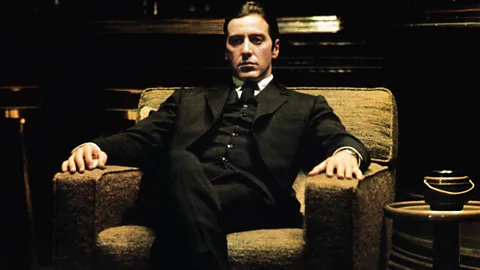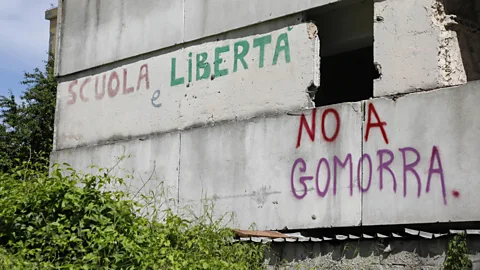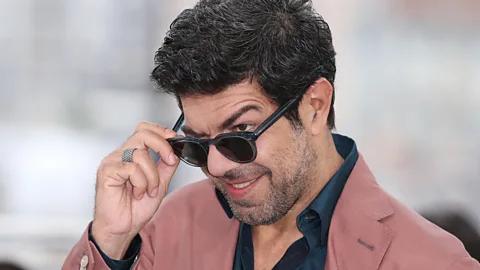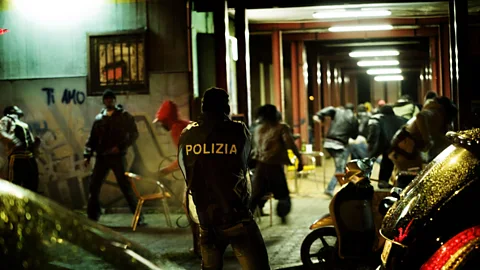Are Mafia dramas getting too close for comfort?

The most memorable mob stories ever told have been on film – but a new wave of films and TV series is getting closer to the reality, writes Emma Jones.
Crime does pay – on cinema screens at least. From 1906, when the first movie audiences quivered at the silent picture The Black Hand: True Story of a Recent Occurrence in the Italian Quarter of New York, the mob has consistently managed to rule and reinvent itself in film and TV.
More like this:
From the 1930s, when James Cagney was nominated for an Oscar for the 1938 gangster film Angels with Dirty Faces, Hollywood has had the monopoly on making the most memorable bad guys, leaving the ‘home’ of the Mafia, Italy, making Europe-only hits such as Romanzo Criminale – until the record-breaking Italian-language TV series Gomorrah started in 2014.
 Alamy
AlamyThe names attached to some of the greatest mob stories ever told, from The Godfather Parts One and Two, to Goodfellas, Casino, and Scarface, plus The Sopranos, betray a distinctly Italian heritage – Scorsese, Coppola, De Niro, Pacino and Gandolfini. But even 1984’s Once Upon A Time in America, made by the late Italian director Sergio Leone, has been appropriated by the US.
“I think it helps Hollywood’s cause, when The Godfather and its sequel came out in the 1970s, that it was simply a sensation,” explains Dana Renga, Associate Professor of Italian and French at Ohio State University, and the author of Mafia Movies: A Reader.
“Not only are The Godfather Parts One and Two cited as the best Mafia films of all time, it’s generally agreed they’re amongst the best movies of all time.
 Alamy
Alamy“When The Godfather was released in 1972 it changed the way actual mobsters in Italy started portraying themselves. If you look at photos or videos of trials in Italy in the 1970s, they were trying to style their hair to look like Marlon Brando as Don Vito Corleone. Hollywood’s dominance at the Italian box office has caused this interplay with real-life mobsters mimicking what they see on the screen. Many modern Mafiosi love to go around quoting these films, and Tarantino and The Sopranos too.”
One mob boss, Walter Schiavone, even had an identical villa built to the one he’d seen in Scarface. Would he have bothered without its powerful and glamorous association with Al Pacino?
“Star casting has so much to do with the appeal,” Renga agrees. “Al Pacino and Robert De Niro are globally recognised names; so is Martin Scorsese. Even 2006’s The Departed with Leonardo Di Caprio and Matt Damon, which has looser connections to an Italian crime family, increases the type of audience who will see it.”
 Alamy
AlamyHistorically, Hollywood has its own connections to the mob, and several of those who appeared in The Sopranos had gang backgrounds, but overall US films can project a myth.
Don Vito Corleone, says Renga, “seems like a family guy, someone you could have dinner with. There’s this recognition from the audience that they are doing dreadful things, but there’s an idea that it’s okay, because it’s fiction.”
 Indigo Film
Indigo FilmBut Italian directors still believe the US owes a great deal to the ‘home’ country. Mario Martone is competing at this year’s Venice Film Festival with an updated adaptation of Eduardo De Filippo’s play, The Mayor of Rione Sanità, set in the heart of the Camorra gang in Naples.
“We did export the Mafia to the US, but we also gave them some of the best directors, grandmasters like Coppola and Scorsese,” he says. “It’s said that the writer Mario Puzo, when he wrote The Godfather, had the Mayor of Rione Sanità in mind as a model for his protagonist.”
Epic story
Italian film-makers certainly make use of history on their doorsteps. Romanzo Criminale was based on a novel that told the true story of the Magliana gang in Rome. Gomorrah, a 2008 film by Matteo Garrone, which had a brutally stark aesthetic, was based on the work of journalist Roberto Saviano in exposing the Camorra crime syndicate.
Often the real-life criminal element is too close for comfort in Italy – the film Gomorrah (a forerunner of the TV series) had several non-professional actors who ended up arrested or investigated, while Saviano, author of the book the film is based on, is still under police protection after being put on a Mafia hitlist. The Mayor of Naples, Luigi de Magistris, recently blamed Gomorrah for a rise in crime in Naples.
Actor Piersco Favino has starred in Italian-language mafia films Romanzo Criminale and Suburra, and is now playing real-life Mafia informant Tommaso Buscetta in Marco Bellocchio’s 150-minute biographical epic The Traitor. “I’ve played quite a few mobsters,” he says, “and it’s never had any appeal for me.”
 Alamy
AlamyFavino relates how “when I was made up and costumed as Buscetta, quite often people around me would say, ‘you remind me of my father, or you remind me of my uncle’. There are still people in Sicily who often make up stories that they met Buscetta. The Mafiosi exude a certain type of male energy, and in the same way that people love Game of Thrones, the Mafia is an epic story about treachery. There’s a King, there’s soldiers who believe they are in a war, with death around the corner. “
Now, reality-based tales about crime are even more popular in Italy than Westeros, with the TV series Gomorrah exported worldwide and inspiring the creation of similar programmes, including Netflix’s Suburra. This spring, the start of season four was watched by more than a million viewers in Italy – double the number that watched Game of Thrones.
 Alamy
AlamyWhy is it so popular? “The Camorra is a modern face of criminals; these people are younger,” explains Rita Di Santo, an Italian journalist and vice president of the International Federation of Film Critics.
“In The Godfather, the tales of the Mafia were real events wrapped up in legend. We know a great deal more about the Camorra because of the work of Roberto Saviano. Gomorrah has an unprecedented realistic touch. The audience has now full immersion in the dark soul of a real criminal organisation. We don’t have one infallible boss, now we have young gangsters and men in suits and ties. We have well-written characters based upon real-life people, who have families and who experience power, love and betrayal.”
 Alamy
AlamySympathising with an all-too-human mobster – most memorably depicted in HBO’s ground-breaking TV series The Sopranos – is now something both Italian and US storytelling share. Tony Soprano was a gangster in therapy, he had many relationships with women and had nightmares about his violent deeds.
“The Sopranos was an anomaly at the time,” Dana Renga points out. “It’s very similar to the modern Italian genre, where they always cry when they kill their best friend, and you have a direct gaze into their interior lives. In Italy though they tend to be younger and very good looking.”
 Beta Film
Beta FilmGomorrah, as well as featuring young blood, has also promoted women mobsters in its ranks, most notably Patrizia Santoro, played by Christiana Dell’Anna. This could lead to Hollywood’s latest mob offerings seeming less nimble by comparison – even when Martin Scorsese returns next month with The Irishman, a $175m (£145m) epic gunning for the Oscars and reuniting all of Hollywood’s mafioso usual suspects – Al Pacino, Robert De Niro and Joe Pesci – for the story of Frank Sheeran, a mob hitman.
Although Scorsese used digital technology to de-age De Niro for certain scenes, audiences now used to Gomorrah might think this vision of the Mafia should be retired – if only mobsters were ever allowed to.
The Traitor is released in the US later this year; The Irishman will premiere on Netflix in the autumn.
Love film? BBC Culture Film Club on Facebook, a community for film fanatics all over the world.
If you would like to comment on this story or anything else you have seen on BBC Culture, head over to our Facebook page or message us on Twitter.
And if you liked this story, sign up for the weekly bbc.com features newsletter, called The Essential List. A handpicked selection of stories from BBC Future, Culture, Capital and Travel, delivered to your inbox every Friday.
